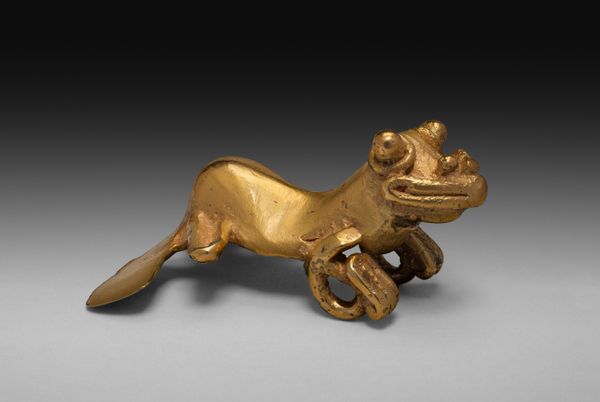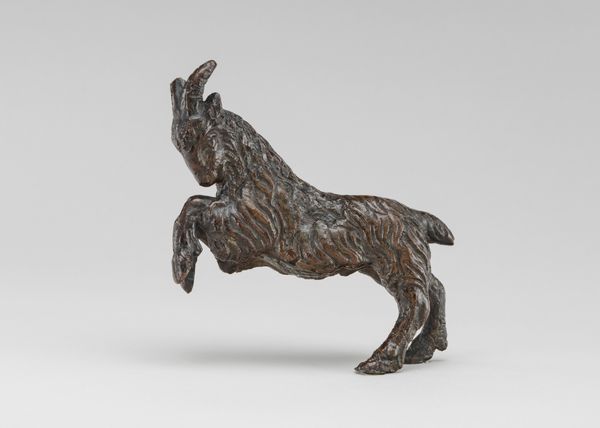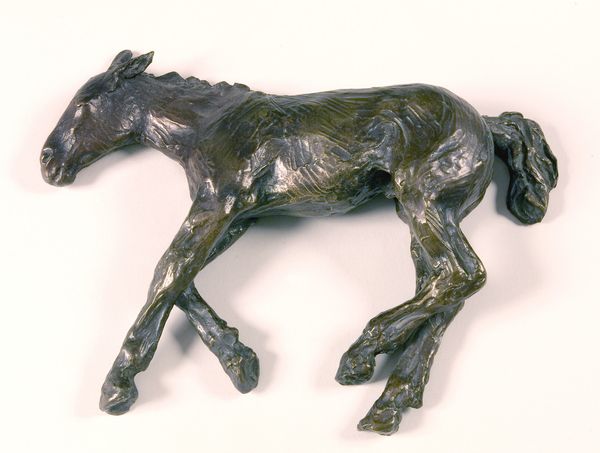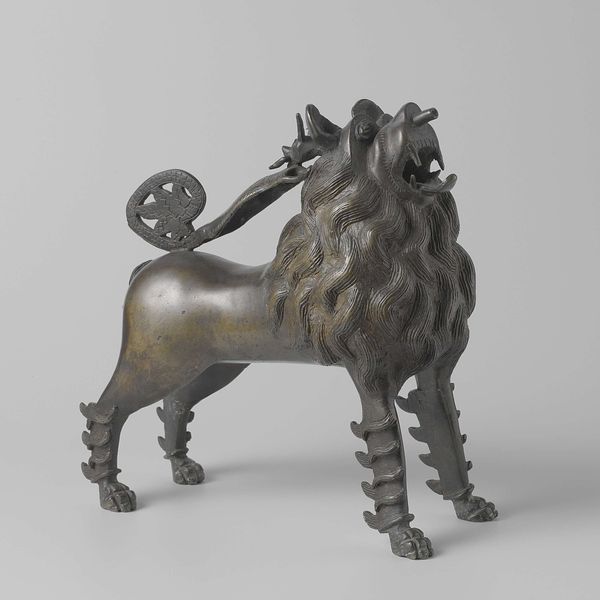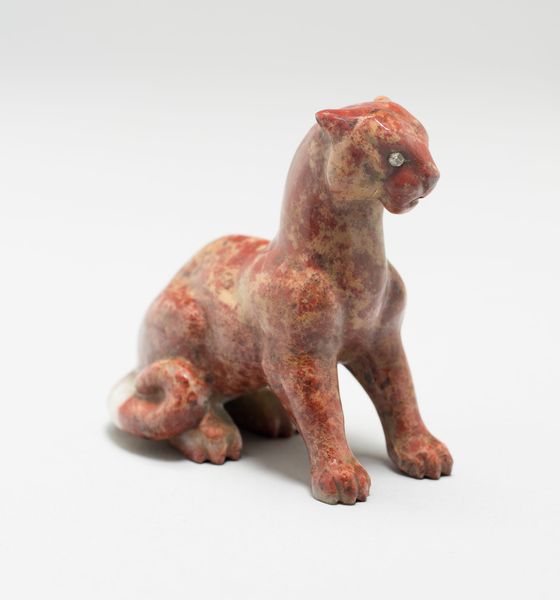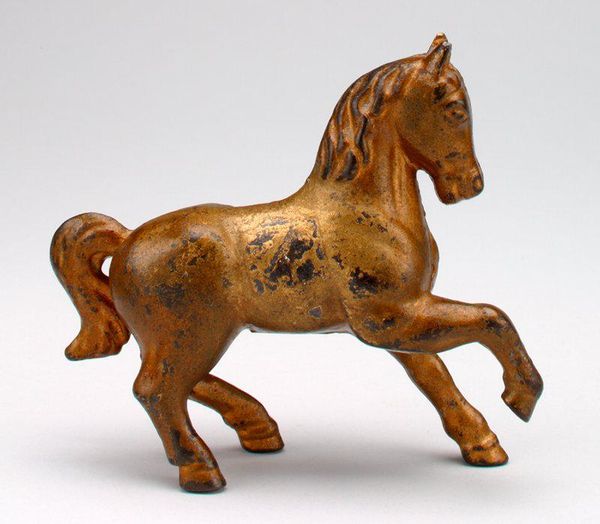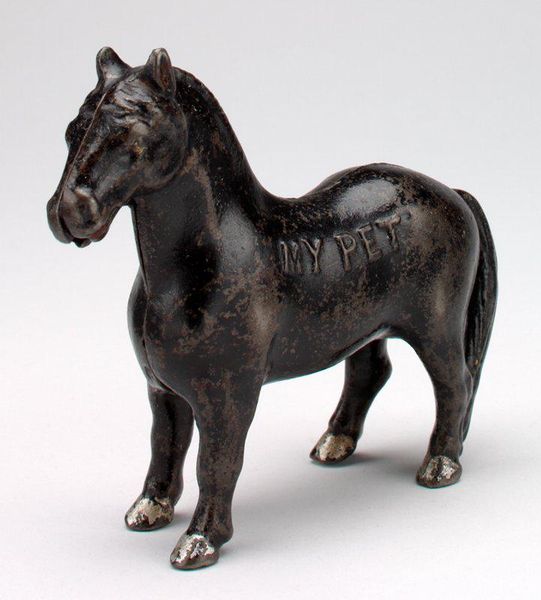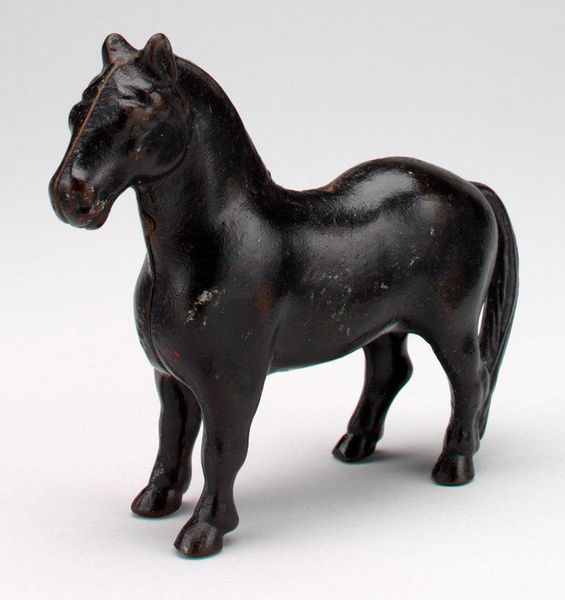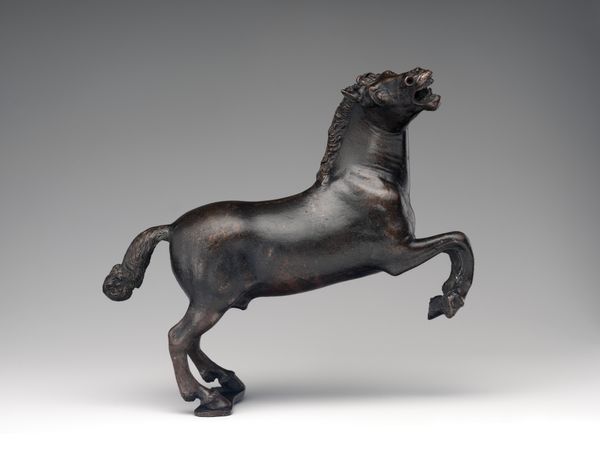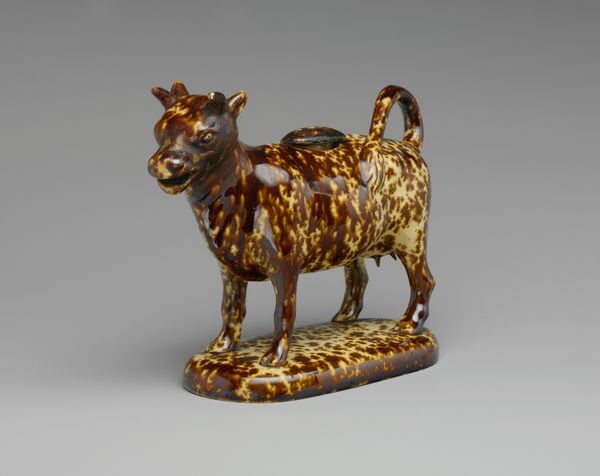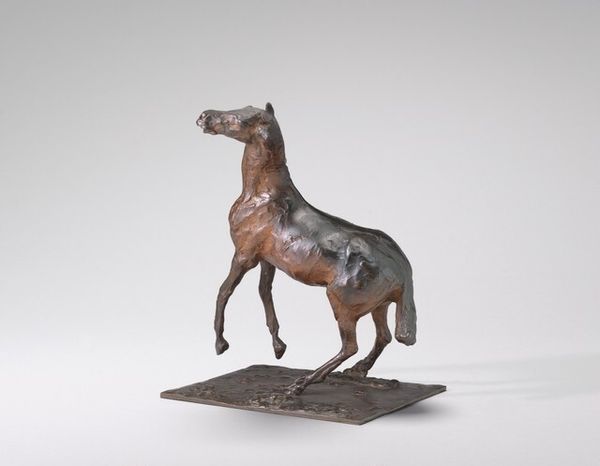
carving, sculpture, wood
#
art-nouveau
#
carving
#
animal
#
figuration
#
sculpture
#
wood
#
decorative-art
Dimensions: height 13 cm, width 12.5 cm, depth 3 cm
Copyright: Rijks Museum: Open Domain
Editor: This is "Deurklink in de vorm van een springende hinde," or "Doorknob in the Shape of a Jumping Deer," crafted from wood by Lambertus Zijl around 1900-1910. I find it interesting how an everyday object receives such detailed attention. What historical perspective can you provide on its cultural significance? Curator: The deer motif experienced significant popularity at the turn of the century. This was related to hunting practices by landowners; art like this celebrated it, turning animals into decorative objects but ignoring their ecological value, which was an increasing concern. Are we celebrating this animal's beauty or turning it into a status symbol for the elite? Editor: That's quite the interpretation. So the deer embodies luxury and societal status rather than simply artistic admiration for nature? Curator: Precisely. And the context of the Art Nouveau movement further emphasizes this. Think about the purpose of Art Nouveau. It sought to integrate art into everyday life. This doorknob then becomes less about pure aesthetics and more about embedding these status symbols into the very fabric of one’s home. Whose homes would feature such crafted items? Editor: Certainly not the homes of everyday people. It feels as though the location and context inform the meaning considerably. Thank you for shedding light on the symbolism. Curator: My pleasure. Considering decorative art through its public role certainly reveals more than initially meets the eye. I'll keep a closer watch for it.
Comments
No comments
Be the first to comment and join the conversation on the ultimate creative platform.
